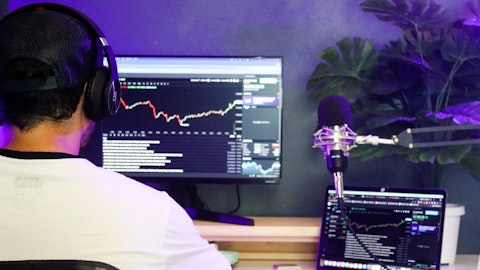For us, we see the, as you mentioned, the opening expansion will become along the Sunbelt and then it’s going to be really just tracing the corridors of demand and economic opportunity for us from there as we move up across the Midwest and up both coasts. Dave, I don’t know if you had more.
David Maday: Yeah. I think that’s right. Like, we look at the commercial, the regulatory, and the technology, and we look at them together. Our customers are a really good guide on their priority for the lane expansion, but I think Chris hit it well. We’ll go — and we’ll provide a little bit more context on this also at our Investor Analyst Day, but, I mean, you think about it, it’s Sunbelt, then it’s starting to head north and continuing to head north and we’ll prioritize the higher demand lanes for our particular customers. I think it’s a balance between both operating between our terminals, but also starting to unlock endpoints for specific customers and we’re going to let the customer help drive the demand because of the self-similarity of the highway systems.
We can pick one or another, and it’s roughly the same technology-wise, as long as there’s no regulatory hurdles, which in our roadmap there aren’t any today. We’ll really let demand be the driver.
Andres Sheppard: Got it. No. That’s super helpful and insightful. I really appreciate all that color. Maybe as a follow-up, following maybe Mark’s conversation and understanding there’ll be more details on this on the Analyst and Investor Day, but maybe at a high level, is there a — what is the best way to think about price per mile, understanding that obviously next year will be up to 20 initial units, but as you begin to ramp up and given all the recent exits in the industry, is there any color maybe at a high level you can kind of give us on what price per mile or what’s the best way to think about that? Thank you.
David Maday: Yeah. So let me start, I think, and we will provide a bit more context on this at our upcoming event. I think, think about the comparison of like we’re trying to offer a product that creates additional value for our customers and the value is in the safety, it’s in the total cost of ownership, it’s in the fuel savings, which falls under total cost of ownership. So there’s a lot of increments to that. We expect a price when we first launch prior to where a driver is a service business model. So we expect a price when we first launch roughly similar to what a traditional line rate would be. So if you look at DAT pricing as an example for lanes, you’ll get a pretty good guide of what each lane is and so that’ll kind of be our boundary of where we’re thinking about it.
When we move to driver-as-a-service, which is our long-term asset light business model, we will be pricing roughly similar to what a human driver equivalent would be, doing some adjustments for the value creation out there. So ATRI does a really good example of what the cost of a human driver is today for carriers and private fleets and that’s a really good source to kind of benchmark against.
Andres Sheppard: Wonderful. Thank you, Dave.
Chris Urmson: Yeah. I think…
Andres Sheppard: Thank you for that.
Chris Urmson: I was just going to say…
Andres Sheppard: Oh! Go ahead.
Chris Urmson: Yeah. I was just going to add a little — like the — I think at the heart of our price strategy is that, yeah, we see this great pricing umbrella with humans driving trucks, right? And for a long time, that’s going to be the dominant form of transportation of freight. And so as we think about pricing, we think — see that as really the competition and we see that, ultimately, we’d be offering a product that is safer, that can move freight more quickly and we see it as really is that the way to think about where to set the price point?
Andres Sheppard: Excellent. Thank you very much again. Very helpful. I’ll pass it on. Thank you.
Chris Urmson: Thank you.
Operator: Thank you. And ladies and gentlemen, we do not have any further questions at this time. That concludes today’s conference call. All parties may now disconnect. Have a great day.
Follow Aurora Innovation Inc. (NASDAQ:AUR)
Follow Aurora Innovation Inc. (NASDAQ:AUR)
Receive real-time insider trading and news alerts





